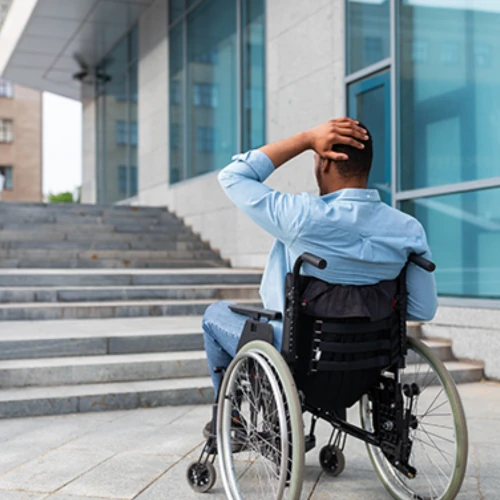by Elayna Alexandra
In conversations about disability and inclusivity, two words are often used interchangably: accessibility and accommodation. Both of these terms are related to creating environments where everyone, regardless of their abilities, feels welcome. But they are fundamentally distinct concepts, reflecting divergent paths toward achieving this goal. This nuanced distinction is paramount in understanding the dynamics of inclusivity and the efforts required to make spaces truly welcoming to people with disabilities.
The Genesis of Inclusivity: Accessibility as a Foundation
Accessibility is the cornerstone upon which inclusive spaces are built. It encompasses the proactive design and implementation of structures, systems, and services that are inherently welcoming to individuals of all abilities. From physical spaces to digital interfaces, accessible design means ensuring that everyone, regardless of their physical or cognitive capabilities, can navigate and engage seamlessly.
Creating accessible spaces requires a commitment to understanding diverse needs and implementing inclusive solutions from the outset. It involves anticipating potential barriers and actively seeking ways to remove or mitigate them. For example, ramps, wider doorways, and elevators are all common manifestations of accessibility in physical spaces. In digital platforms, familiar examples include captioning and screen-reader compatibility. In workplaces, accessibility is often seen in the form of sit/stand desks, quiet distraction-free work areas, and varied seating options. The challenge is big, because what is accessible to one is not inherently accessible to another. Simply thinking about these questions and addressing them with integrity is the heart of accessibility. Getting clear about what forms of accessibility you are able to offer, and which ones you are not able to achieve, can help each person understand if the space will be welcoming to them or not.
The Uphill Battle: Advocating for Accommodations
While accessible design occurs proactively to make spaces inclusive for all, accommodations are reactive measures taken specifically to address the needs of individuals with disabilities. Unlike accessible elements, accommodations are often implemented on a case-by-case basis, tailored to the unique requirements of an individual. They can range from providing sign language interpreters for meetings to adjusting work hours to accommodate medical treatments.
Getting accommodations, however, is not a seamless process. Individuals with disabilities often find themselves in the uncomfortable role of advocating for their own needs. Advocacy can be daunting, requiring individuals to navigate complex bureaucratic processes, educate others about disability, and overcome resistance and lack of understanding. Systems of all kinds are inherently hostile to personalized accommodations. Whether an individual is seeking an accommodation in a workplace, campus, transit facility, public space, or residential building, they face the burden of articulating their needs repeatedly, championing their cause, and overcoming indifference, skepticism, and other negative responses. This process can be emotionally and mentally taxing, adding an additional layer of challenge for individuals who are already contending with the daily complexities of living with a disability.
Proactive and Reactive Solutions: Shaping Inclusivity
Understanding the fundamental difference between accessibility and accommodations is crucial for fostering a culture of inclusivity. While accessibility creates a foundation that welcomes everyone from the outset, accommodations are often narrower in scope and pursued reactively to address specific unmet needs. The stark contrast in the two approaches underscores the importance of proactive, inclusive design in shaping a society that embraces diversity.
To truly create a welcoming and inclusive environment, it is imperative to prioritize accessibility in all aspects of life—from urban planning and architecture to technology and communication. This proactive approach not only reduces the burden on individuals to advocate for their needs but also ensures that inclusivity becomes a natural, ingrained aspect of our shared spaces and experiences.
In conclusion, the journey towards inclusivity is a multifaceted one. By understanding the dichotomy between accessibility and accommodations, we can collectively work towards fostering environments that not only meet the needs of individuals with disabilities but also celebrate the richness that diversity brings to our communities. Embracing accessibility as a guiding principle ensures that inclusivity is not just a goal but a reality, seamlessly woven into the fabric of our daily lives.
Elayna Alexandra is a life coach, strategist, and writer. Visit her online at elaynaalexandra.com or on Instagram at @elaynaalexandra.
